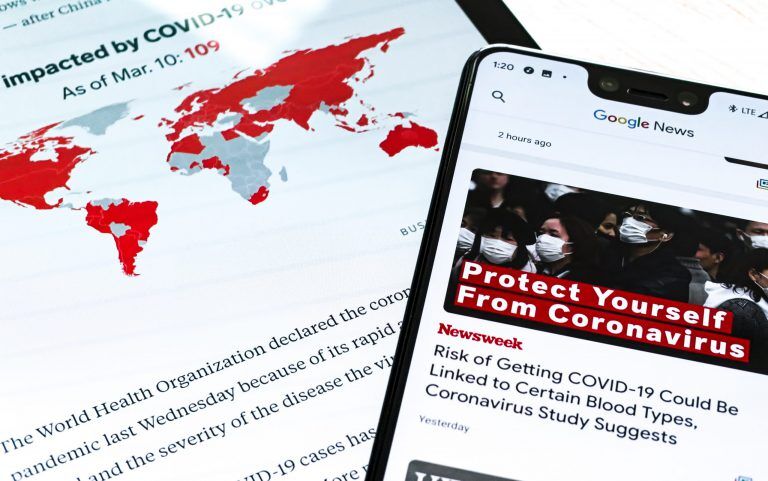They all have one thing in common. Every single business has issued their own written response to COVID-19. We’ve seen press releases, Twitter threads, thousands of CEO updates by email. Some organizations have communicated well. Others have struggled with plain language. It’s understandable. We’ve never experienced anything quite on this scale before. And most HR and operations teams are rapidly updating internal policies and procedures. The most obvious of these are work-from-home policies, refund entitlements, etc. This will continue as we all get to grips with the ‘new normal’.
Clear communications, both external and internal, are crucial during a crisis. But they take time to get right, and that’s something none of us have much of right now. We wanted to unpack why clear communications really matter, especially during a crisis. Why it’s worth taking the time to craft your written response, or company policy, carefully. And we’ll also offer tips on how to communicate clearly.
Why clear communications matter (even more) in a crisis
Think about what’s being asked of us right now. We might be working from home, perhaps adjusting to this way of working for the very first time. Many of us are also caring for small children. We’re thinking about how we can get the groceries we need. We’ve also got one eye on our phones to see if our elderly neighbor needs help. And some of us may wonder about the viability of our employer.
Given all this, let’s assume you get an email from your insurance provider notifying you of a change in your household policy terms. It talks about an increase in your “excess coverage insurance policy deductible”. You’re not quite clear of the implication. You try calling the number at the end of the mail. You’re on hold for 25 minutes, and give up in frustration. We’re not able to focus fully on this communication, it’s too complex. During a crisis, it’s “tone deaf”, and damages the brand of the insurance provider. And it’s all down to lack of clear communication.
Plain, jargon-free language, is key to making sure important messages get through. It also saves on rewrites. It’s easy to panic, and rush to get a message out quickly. But in the long run, you might end up sending even more communications to clarify. Take just a little time to get it right.
How to communicate in a crisis
So, how can you communicate clearly in a crisis? Here are some ideas on where to start.
Use plain language
The basic principles of plain language are:
1. Use shorter sentences
Shorter sentences are easier to understand than long ones. Love him or hate him, CNBC and others praised New York governor Andrew Cuomo for his use of plain language during the current crisis. In preparing New Yorkers for the huge sacrifice they would have to make, he said:
“This is not a short-term situation. This is not a long weekend. This is not a week.”
The short, snappy sentences clearly get across the message. This will be tough. The rule of thumb is one thought per sentence.

2. Keep grade level as low as possible
The US population reads at 8th-grade level, on average. So in usual circumstances, we advise writing at an 8th-grade level. That ensures the whole population will understand you. Grade level represents the number of years of education you need to easily understand a piece of written content. It is an objective metric to quantify complexity in writing. In certain situations, however, you need to write at a lower than 8th grade. Think of your audience. They will already be multitasking during a crisis, and more likely to miss important messages. Keeping your grade level as low as possible reduces barriers to understanding.
3. Use active voice
When you use active voice, it’s clear who is taking the action. Compare the following sentences:
Passive voice
Hands should be washed often with soap and water for at least 20 seconds.
Active voice
You must wash your hands often with soap and water for at least 20 seconds.
It’s a subtle, but important, change. By using the active voice and stating “you must”, it is clear who takes action. Leave no room for ambiguity during a crisis.
4. Use everyday language
We’re seeing the opposite of everyday language right now. Take these examples of words and acronyms used a lot during the current COVID-19 crisis:
- PPE
- Incubation
- Respiratory
- Transmission
- Quarantine
We even refer to COVID-19 in different ways. “Covid”, “coronavirus”, “corona”, “SARS-CoV-2”. Google the question: “what is the difference between COVID-19 and coronavirus?” Right now you get 9,800,000,000 results. People are confused.
Let’s take another example. The epidemiological term “social distancing” has made its way into common language since the outbreak of COVID-19. Dr Fauci breaks this down as “physical distancing of people”. So why not call this “physical distancing”? Or use simpler, more active language such as “stay 6 feet or more away from each other”. Unfamiliar, complex words add to our mental loads. Avoid them where at all possible.
Karen Russell of The New Yorker describes how COVID-19 has “infected our vocabulary” with its complicated jargon:
“Today, we are witnessing the shotgun weddings of words into some strange unions, neologisms sped into existence by this virus (“quarantunes,” “quarantini”), epidemiological vocabulary hitched together by Twitter hashtags. It seems like there is a parallel language contagion occurring. “Self-isolation,” “social distancing,” “abundance of caution”—pairs of words I’d never seen together in a sentence back in January have become ubiquitous. These phrases are traveling even faster than the virus, eye to mind, ear to mouth, disseminated by our iPhone screens and televisions.”
Even in “normal” times, it’s better to simplify your language. During a crisis, it’s absolutely key.
Show a little empathy
Empathy is often lost during a crisis because everyone is so busy firefighting. But it’s crucial. Put yourselves in your audience’s shoes. Ask yourself “what would I most like to hear at this time?” Deborah Bosley is the Founder and Principal of The Plain Language Group. She was a previous guest on our webinar about plain language in financial services. During a recent webinar on crisis communications, she talked about Grubhub’s empathetic response to COVID-19. Grubhub realized what their community was most worried about – their favorite restaurants going out of business. So they emailed customers to explain what they were doing about it:
“With dine-in down as much as 75%, local restaurants need our support more than ever. As their partner, it is Grubhub’s responsibility to step up during this difficult time. So, we are deferring commission fees for impacted independent restaurants.”
Be truthful and consistent
The crisis situation might change from moment to moment, but your approach should stay open and consistent. When you get new facts, explain clearly why you’re therefore adopting a different approach. Take a lesson from Cuomo:
“Cuomo’s communication style shows people that their ship has a captain in command. That’s reassuring. More importantly, his forthrightness with facts shows he is being transparent, which earns him public trust.”
In a climate of uncertainty, people need to know that you’ll come good on your promises.
And don’t forget that “being truthful” also means staying true to your brand and your own tone of voice. Now is not the time to pretend you’re something you’re not. We’ve seen great examples of organizations stepping up to delight customers through self-isolation, while still retaining the spirit of their brand. Check out:
- London’s “Time Out” magazine, who are currently “Time In”
- Hyundai’s take on “the new car-sharing”
It’s time to put trust center stage
Trust is a big deal right now. Even before the COVID-19 outbreak, many industries were already seeing low consumer trust. The 2020 Edelman Trust Barometer launched back in January. It showed that 76% of people were worried about the spread of fake news and false information. The COVID-19 outbreak is further contributing to this climate of anxiety and distrust. There’s never been a better time to put clarity first. Why not start by making your COVID-19 communications as clear as possible?



